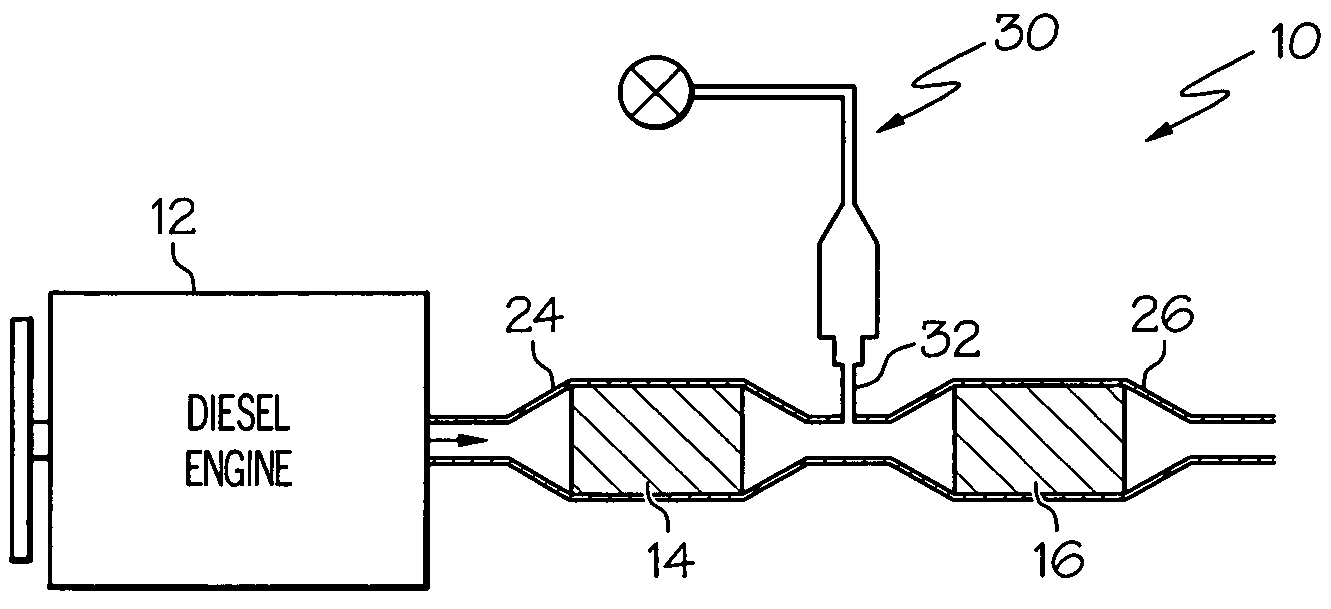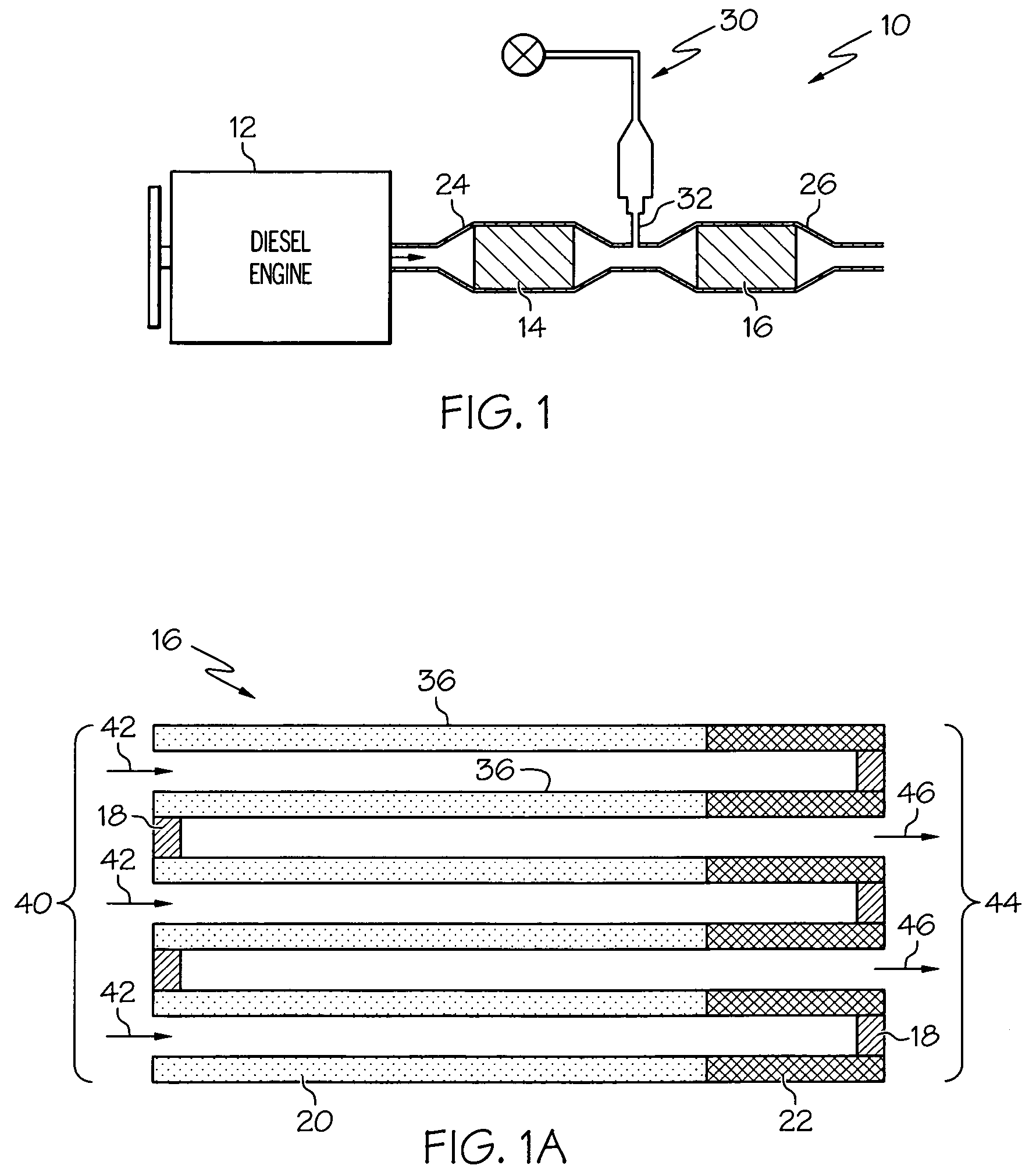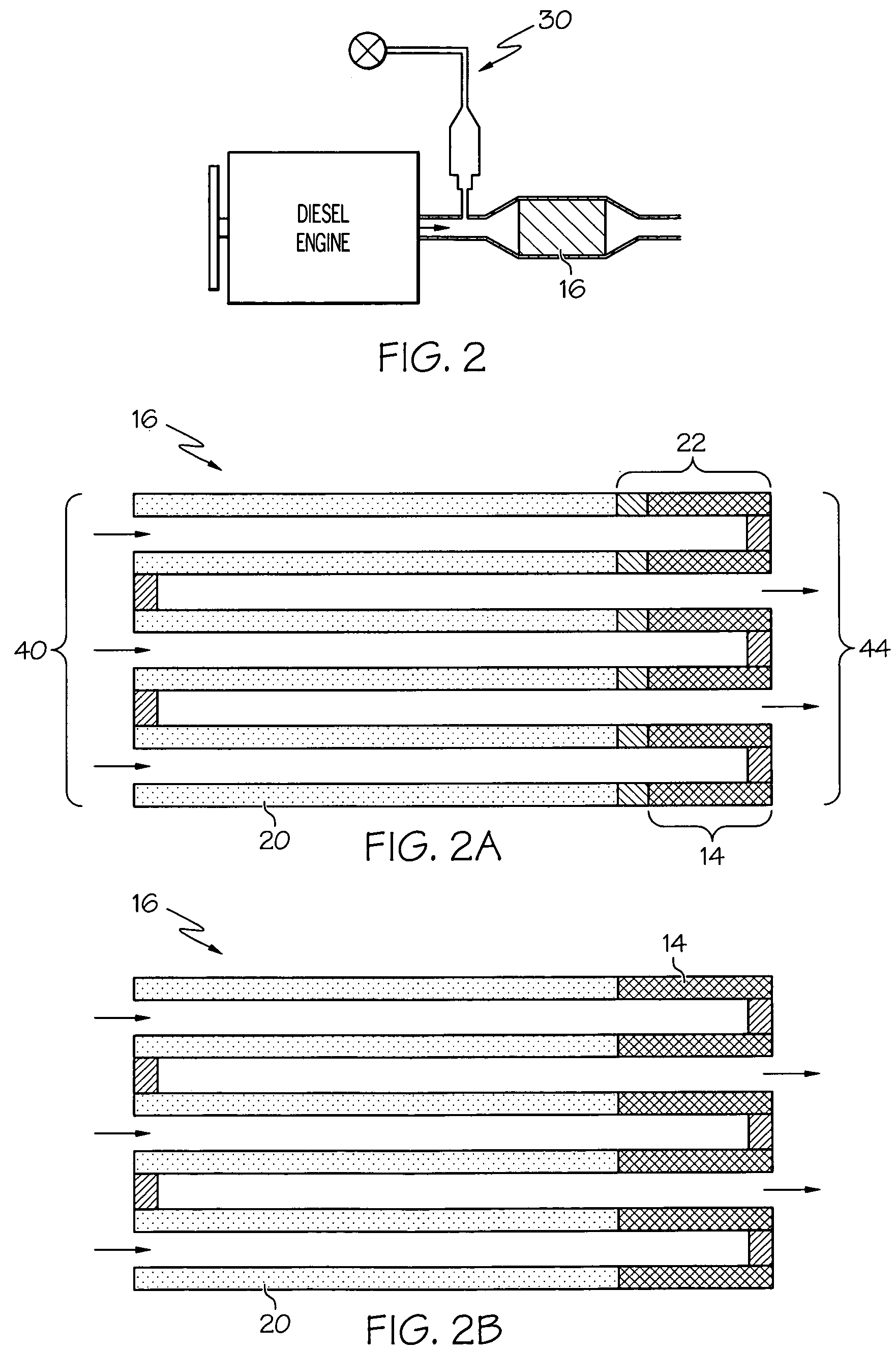Compact diesel engine exhaust treatment system
a diesel engine and exhaust treatment technology, applied in the direction of machines/engines, separation processes, mechanical equipment, etc., can solve the problems of generating additional exhaust gas back pressure, limited packaging space, and high production cost of the system, and achieves compact and efficient removal of undesirable components and minimal backpressure
- Summary
- Abstract
- Description
- Claims
- Application Information
AI Technical Summary
Benefits of technology
Problems solved by technology
Method used
Image
Examples
example 1
[0064]A ceramic cordierite DPF substrate having 65% porosity and 21 μm pore size was coated with a Cu / zeolite SCR catalyst. The substrate was 1 inch in diameter and 3 inches in length. The integrated SCR / DPF was evaluated for NO-only SCR reaction at various NH3 / NOx (ANR) ratios. In comparison, a similar SCR / DPF substrate had deposited thereon a washcoat of an ammonia oxidation catalyst, or ammonia slip catalyst (ASC),i.e., platinum (Pt), at the outlet end. The length of Pt deposition was 0.5 inches and the Pt loading was 20 g / ft3. Steady state activity testing was conducted under the following conditions: flowing 350 ppm NO, 5% CO2, 4.5% H2O, and the balance N2. The NH3 concentration was varied: 315 ppm, 350 ppm, 420 ppm and 525 ppm. This resulted in equivalent NH3 / NOx ratios of 0.9, 1.0, 1.2, and 1.5. The total gas flow was 12.88 l / min., equivalent to a space velocity of 27,000 / h after excluding the p lugged substrate volume on each end.
[0065]FIG. 4 illustrates the NOx conversions ...
example 2
[0069]FIG. 8 is a graph illustrating the performance of an exhaust treatment system utilizing a diesel particulate filter including a DOC catalyst, SCR catalyst, and ammonia oxidation catalyst in comparison with an exhaust system utilizing a DOC catalyst only. As can be seen, the system utilizing multiple catalysts on the DPF results in similar or better performance in the elimination of HC and CO under varying temperature and light-out conditions.
[0070]The HC slip performance and fuel quench threshold (FQT) of the same treatment systems is shown in FIG. 9. By “FQT”, it is meant the minimum safe temperature where the DOC can oxidize post-injection or downstream injection fuel to generate heat for DPF regeneration.
example 3
[0071]FIG. 10 illustrates the ammonia conversion the performance of an exhaust treatment system utilizing a diesel particulate filter including a DOC catalyst, SCR catalyst, and ammonia oxidation catalyst in comparison with an exhaust system utilizing an SCR catalyst and ammonia oxidation catalyst (AmOx) catalyst only. As can be seen, the performance of the two systems both exhibited 100% conversion.
PUM
| Property | Measurement | Unit |
|---|---|---|
| porosity | aaaaa | aaaaa |
| size | aaaaa | aaaaa |
| pore size | aaaaa | aaaaa |
Abstract
Description
Claims
Application Information
 Login to View More
Login to View More - R&D
- Intellectual Property
- Life Sciences
- Materials
- Tech Scout
- Unparalleled Data Quality
- Higher Quality Content
- 60% Fewer Hallucinations
Browse by: Latest US Patents, China's latest patents, Technical Efficacy Thesaurus, Application Domain, Technology Topic, Popular Technical Reports.
© 2025 PatSnap. All rights reserved.Legal|Privacy policy|Modern Slavery Act Transparency Statement|Sitemap|About US| Contact US: help@patsnap.com



